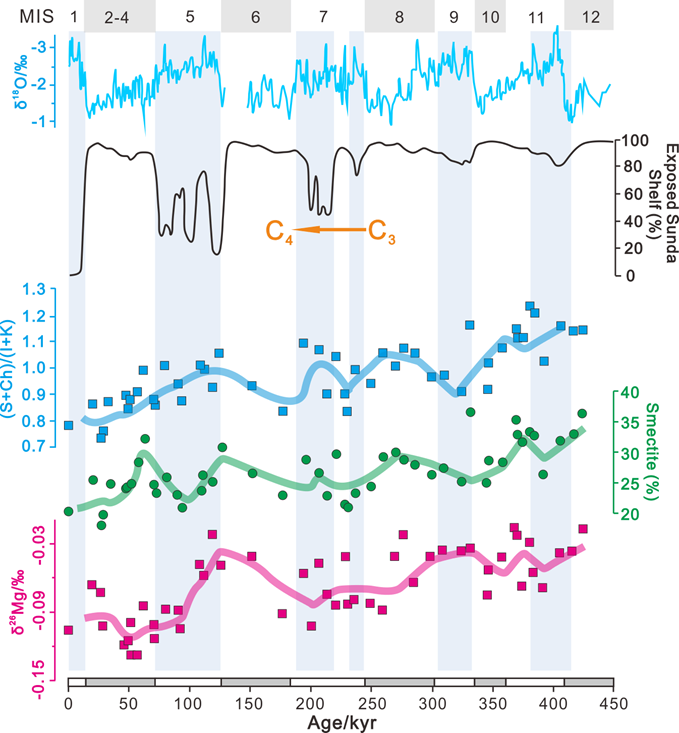Zhongya Hu1 , Shouye Yang1 , Yue Wang1 , Fangbing Li1 , and Simon V. Hohl1
1 State Key Laboratory of Marine Geology, Tongji University, Shanghai, China
Abstract :The Mid‐Brunhes Event (MBE, ∼430 ka) represents a pivotal climatic transition in the late Pleistocene, while monsoon‐driven impacts on low‐latitude regions during this interval remain debated. Sediments archived in the MD05‐2901 gravity core from the South China Sea (SCS) record the influence of the East Asian summer monsoon (EASM) on regional climate dynamics. In this study, we employ major and trace element systematics and magnesium isotope analyses (δ26Mg) of clay‐sized (<2 μm) sediments to reconstruct EASM variability, offering a novel perspective on its evolution over the past 430 ka. Upper Continental Crust normalized rare earth element and major elemental depletion patterns are consistent with established sequences of elemental mobility during silicate weathering, thus these sediments are produced by silicate weathering. A temporal decline in δ26Mg values is observed, correlating with reduced smectite and chlorite proportions in the total mineral assemblage. This coupled trend deviates from expectations for silicate weathering sequences, necessitating a re‐evaluation of sediment provenance. Provenance analysis demonstrates that smectite and chlorite predominantly derive from mafic rock weathering in the southern SCS. We propose that the observed mineralogic and isotopic shifts reflect a temporal decrease of highly weathered siliciclastic materials from southern provenances presumably related to a weakened clockwise oceanic circulation system, which is a coupled response to the long‐term weakening of EASM and intermittent inundation of the Sunda Shelf over the past 430 Ka. Our results underscore the interconnected marine‐terrestrial climatic feedbacks modulating tropical monsoon systems on orbital timescales.
Full article:http://dx.doi.org/10.1029/2025PA005292



